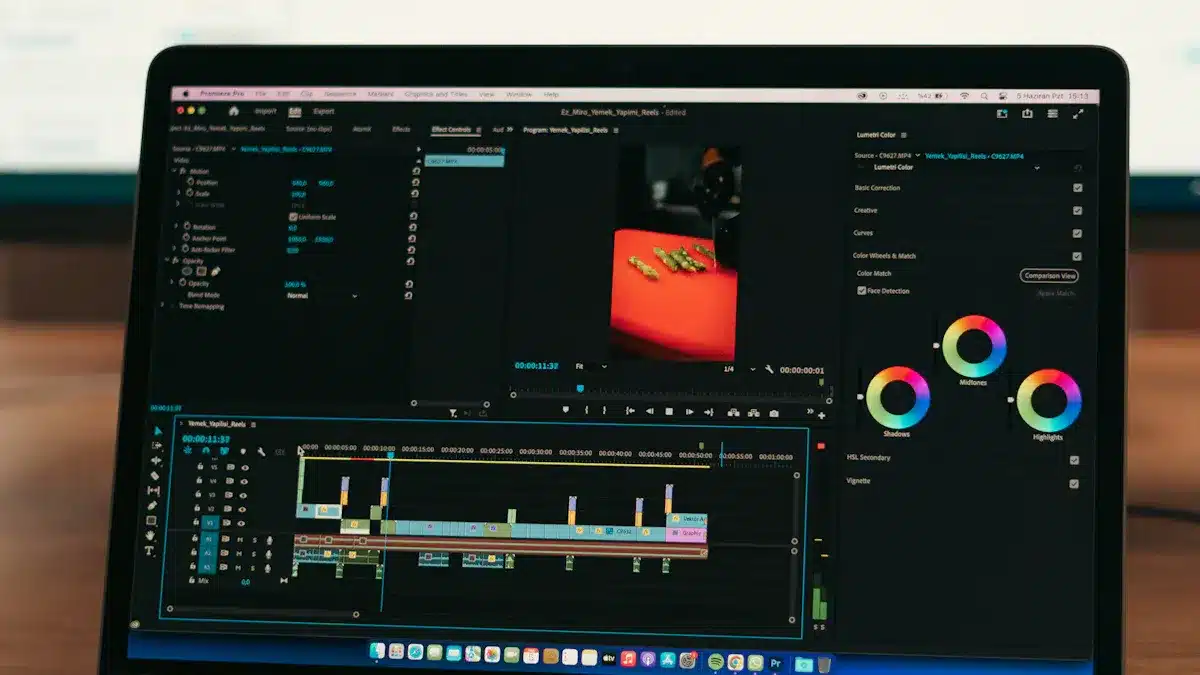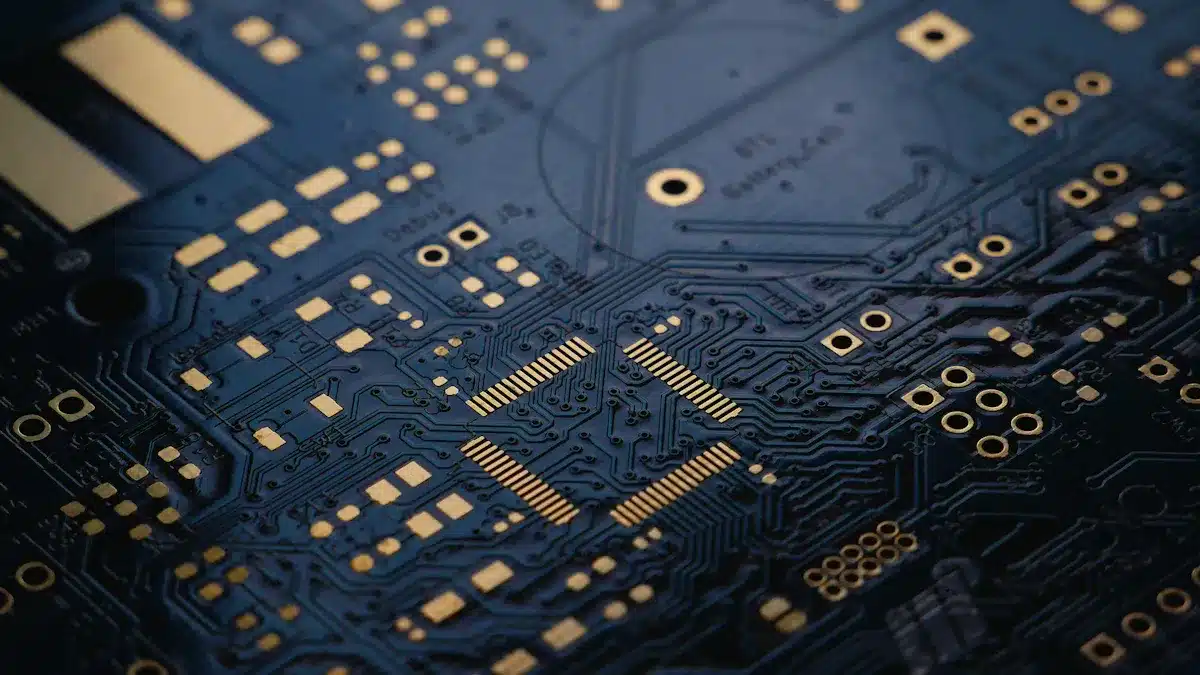
Choosing the right circuit board design software can be hard. Users often face many problems during this choice. Here are some common issues:
Ease of Use: A confusing interface can cause frustration.
Learning Curve: A tough learning curve can slow you down.
Feature Set: Balancing advanced features with ease is important.
Cost: High prices can scare away users.
Scalability: Thinking about future needs is very important.
Picking the right software needs careful checking of these factors. This helps make sure it fits your needs.
Key Takeaways
Pick software that is easy to use. This will make your design work better and less frustrating.
Think about how hard it is to learn. Choose software that has training materials to help you learn fast.
Check the price closely. Look at all costs to make a smart budget choice.
Find important design features. These include simulation tools and large component libraries to help your projects succeed.
Make sure it works well with other tools and file types. This will help your team work together and make your design process easier.
Usability in PCB Design Software

When you pick circuit board design software, usability is very important. A good user interface can really improve your experience. It helps you move around the software easily and finish tasks quickly. Here are some key points to think about for usability:
User Interface
The user interface (UI) is the first thing you see when you open PCB design software. A simple and clear UI can really help your work. Here are some features that make things easier:
Feature | Benefit |
|---|---|
Unified Design Environment | Makes using different tools easier, cutting down on complex data transfers. |
Consistent User Interface | New features fit in well, making it easier for users to learn. |
Improves usability, making the design process simpler and faster. |
Software with a friendly interface usually gets better satisfaction ratings. For example, here’s how some popular PCB design software scores on ease of use:
Software | Ease of Use | Community Support | Personalization |
|---|---|---|---|
Altium Designer | Moderate | Extensive | High |
KiCAD | Moderate | Extensive | High |
Cadence Allegro | Complex | Extensive | High |
Eagle | Easy | Extensive | Medium |
ORCAD | Moderate | Moderate | Medium |
PADS | Moderate | Moderate | Medium |
EasyEDA | Easy | Extensive | Low |
DipTrace | Easy | Moderate | Medium |
Learning Curve
The learning curve is also very important. A hard learning curve can make beginners feel discouraged. You want software that helps you learn quickly. Usually, it takes about 3-6 months for a beginner to get good at PCB design software, especially with help. This time can change based on what you already know about key ideas like stackups and routing strategies.
To help with learning, many software companies provide training resources. Here are some helpful options:
Resource Name | Description | |
|---|---|---|
Altium Training | Great training resources including courses and articles for PCB design. | |
How To Learn PCB Design | A list of different learning resources for PCB design skills. | |
Altium Education | Free online courses covering the basics of PCB design with hands-on projects. | |
Basic PCB Design | Course from UC San Diego to learn PCB design and make professional circuit boards. |
By choosing software with a friendly interface and good training resources, you can make the learning curve much easier. This way, you can focus on your projects instead of struggling with the software.
Cost of PCB Design Software
When you pick circuit board design software, knowing the cost is very important. Different pricing plans can change your budget a lot. Here are some common plans:
Pricing Models
One-Time Purchase: You pay one fee for the software. This plan is good for users who want to avoid extra costs. For example, if you buy software for $500, you own it forever.
Subscription-Based: You pay a fee every month or year. This plan might seem cheap at first, but it can cost more over time. For example, if a subscription is $20 a month, you would spend $480 in two years. After that, your total payments would be more than the one-time purchase price.
Freemium: Some software gives basic features for free. You can pay for advanced options later. This plan lets you try the software before buying it.
Total Cost of Ownership
The total cost of ownership (TCO) is more than just the first price you pay. Think about these things that add to TCO:
Factor | Description |
|---|---|
Software Costs | Prices go from free to high, affecting project budgets based on licenses and updates. |
Professional Software | High fees for popular tools like Altium Designer and Cadence Allegro. |
Open-Source Options | Cheaper choices like KiCad work well for simpler designs. |
Specialized Features | Extra features raise costs based on how complex the design is. |
Expertise Level | Skilled designers charge more because they are fast and good at their work. |
Impact of Specialized Knowledge | Skills in areas like high-speed design raise costs due to needed training and experience. |
Also, maintenance and upgrade fees can change your TCO. Regular updates and fixes help the software last longer and work better. Bug fixes and improvements help avoid problems like crashes. Keep in mind that some maintenance costs might not be included in regular agreements, which can affect your budget.
By knowing these pricing plans and what affects TCO, you can make a smarter choice when picking the best PCB design software for you.
Features of Best PCB Design Software

When you choose the best PCB design software, think about its features. The right software should have important design tools and strong component libraries. These features can really affect how well your design works and how successful your project is.
Design Capabilities
The best circuit board design software has many important design tools. These features help you make good and efficient designs. Here are some key tools to look for:
Simulation capabilities: This lets you test both analog and digital circuits before making them. You can find problems early, which saves time and money.
Schematic capture and PCB layout: Built-in tools for schematic capture and PCB layout create a complete design space. This makes your work easier and cuts down on mistakes.
Virtual prototyping: This lets you test designs before making real prototypes. You can spot problems early, helping you avoid expensive errors.
Extensive libraries: A large selection of parts and modules makes designing easier. You can quickly find what you need without starting over.
These design tools match your project needs. They help you make accurate designs and cut down on time spent fixing things.
To improve design accuracy, simulation tools are very important. They offer different checks and tests to make sure your design meets the right standards. Here’s how simulation tools help with accuracy:
Evidence Type | Description |
|---|---|
Automatically checks your layout against design rules, pointing out problems to avoid issues later. | |
Signal Integrity Analysis | Tests signal behavior, finding problems like too much noise and bad impedance matching. |
Testing Before Fabrication | Spots potential problems in the design stage, allowing fixes before making real prototypes. |
Component Libraries
Component libraries are another key feature of the best PCB design software. They give you ready-to-use parts that can speed up your project. Here’s how they help your work:
You can access many components, cutting down the time spent on making footprints and managing parts.
With organized libraries, you can focus on real design work instead of doing the same tasks over and over.
But, if libraries are not managed well, it can cause problems. A messy library may lead to repeated work and using the wrong parts. Unorganized processes can mean many redesigns to fix library issues. So, a well-organized component library is very important for smooth design.
The size and variety of component libraries can differ among popular PCB design software. Here’s a look at some well-known options:
Software | Component Count | Notable Features |
|---|---|---|
Altium Designer | Large libraries with 3D models and real-time supplier links. | |
KiCad | N/A | Grows with community help and flexible component definitions. |
EAGLE | N/A | Unique library system with custom libraries shared by the community. |
OrCAD | N/A | Professional libraries with simulation models and supplier database links. |
By picking software with strong design tools and large component libraries, you can improve your design work. These features not only make things faster but also help you create high-quality designs that fit your project needs.
Compatibility with Other Tools
When you pick circuit board design software, it’s very important that it works well with other tools. You want software that fits nicely into your current workflows. This can really help you work faster and better with others. Here are some important things to think about:
Integration
Good integration helps you make your design process easier. It connects different tools and systems, making your work smoother. Here are some good things about having strong integration:
Benefit | Description |
|---|---|
Collaboration | Better communication and sharing of information among design teams and stakeholders. |
Improved data management | Keeping design files in one place cuts down on mistakes and makes processes easier. |
Efficient change management | Managing changes to design data helps avoid problems and keeps everything in line. |
Accelerated time-to-market | Smoother workflows help speed up product development cycles. |
Enhanced product quality | Better data management and teamwork lead to better project results. |
Reduced costs | Using resources wisely and improving quality can save money in the long run. |
By making sure your PCB design software works well with other tools, you can boost your workflow efficiency. This helps you avoid common issues that can slow down your projects.
File Formats
File format compatibility is also very important. Different teams often use different software, which can cause problems when sharing files. If the design data you send can’t be opened by the receiving team, it can create confusion. This can make working together harder. So, you should choose software that supports popular file formats.
Here are some of the most common file formats used in PCB design software:
File Format | Purpose and Details | Common Extensions |
|---|---|---|
Gerber Files | Standard for PCB manufacturing, showing individual PCB layers. | .GBR, .GTL, .GBL, .GTS, .GBO |
Drill Files | Shows drilling info for vias and mounting holes. | .DRL, .TXT |
ODB++ | Combines all design data into one file. | .TGZ |
IPC-2581 | Open format for sharing manufacturing data, combining different design rules. | .XML |
DXF | Used for sharing mechanical data with CAD tools. | .DXF |
Pick-and-Place | Gives assembly machines data on where to place components. | .TXT, .CSV, .PNP |
Netlist Files | Shows electrical connections between components. | .NET, .XML |
Bill of Materials | Lists all parts needed for buying and assembly. | .CSV, .XLSX |
By choosing the best PCB design software that supports these formats, you can make teamwork easier. This compatibility ensures everyone can access and work with the design data without extra problems.
Evaluating PCB Design Software Options
When you look at circuit board design software, it’s very important to think about the good and bad sides of each choice. This helps you make a smart decision that fits your project goals.
Pros and Cons
Here’s a table showing the most common pros and cons of popular PCB design software:
Software | Pros | Cons |
|---|---|---|
Has SPICE simulation built in | Hard to learn | |
Works on Windows, MacOS, and UNIX | No dedicated support | |
LibrePCB | Modern and easy to use | Lacks advanced features |
Uses a readable text file format | Small user community | |
Fritzing | Lets you create parts libraries and PCBs | No simulation features |
Offers kits for different skill levels | Too focused on Arduino | |
TinyCAD | Can be used online | Misses typical PCB design features |
Exports SPICE simulation files | Uses a special component format | |
FreePCB | Simple and easy to use | Only works with PADS netlists |
Has autorouting | Lacks advanced features | |
Eagle | Easy to use interface | Paid version needed for advanced features |
Cadence Allegro | Strong features for complex designs | High cost, usually for big companies |
By looking at these pros and cons, you can find which software fits your needs best. User reviews are also helpful. They show strengths and weaknesses, guiding your choices. For example, feedback often talks about problems like old interfaces or slow speeds.
Specific Needs
Your project needs greatly affect your choice of best PCB design software. Think about these factors:
Better Accuracy and Consistency: Make sure everyone uses the same information. This cuts down on mistakes.
Easier Component Selection: Clear criteria help you find the right parts quickly. This saves time and resources.
Better Supplier Communication: Detailed specs help get accurate quotes from suppliers. This avoids delays.
By focusing on what you need, you can pick software that boosts your design efficiency. This way, you choose a tool that meets your current needs and can handle future challenges.
Picking the right PCB design software is very important for your projects. The market is growing fast because of the need for better electronic devices. You should think about things like how easy it is to use, the cost, and the features.
Here are some key benefits of choosing the right software:
Benefit | Description |
|---|---|
Compact Design | Helps place parts well, making the size smaller. |
Lower Assembly Errors | Cuts down on wiring mistakes, saving money during assembly. |
Improved Repeatability | Makes sure production lots are the same, improving reliability and consistency in performance. |
Keep up with trends like AI and cloud solutions. These new ideas can make your design work better and help you work with others. By choosing wisely, you can make your design process smoother and get better results.
FAQ
What is PCB design software?
PCB design software helps you make printed circuit boards. It lets you create schematics, layout circuits, and prepare files for making the boards. You can test designs and find mistakes before production.
How do I choose the right PCB design software?
Think about usability, cost, features, and how well it works with other tools. Check your specific needs and project goals. Read user reviews to learn about the strengths and weaknesses of different software options.
Can I use free PCB design software?
Yes, there are many free options like KiCAD and EasyEDA. These tools have basic features for beginners and small projects. But, advanced users might need paid software for more complicated designs.
How long does it take to learn PCB design software?
The time it takes to learn varies based on your past experience. Beginners usually take 3 to 6 months to get good at it. Using training resources and tutorials can help you learn faster.
What are the common file formats used in PCB design?
Common formats include Gerber files for making boards, drill files for vias, and netlist files for electrical connections. Make sure your software supports these formats for better teamwork and data sharing.
See Also
Important Aspects To Think About When Selecting PCB Or PCBA
Crucial Elements To Evaluate When Picking A Custom PCBA Maker
Best Advice For Selecting The Ideal Main PCBA For You